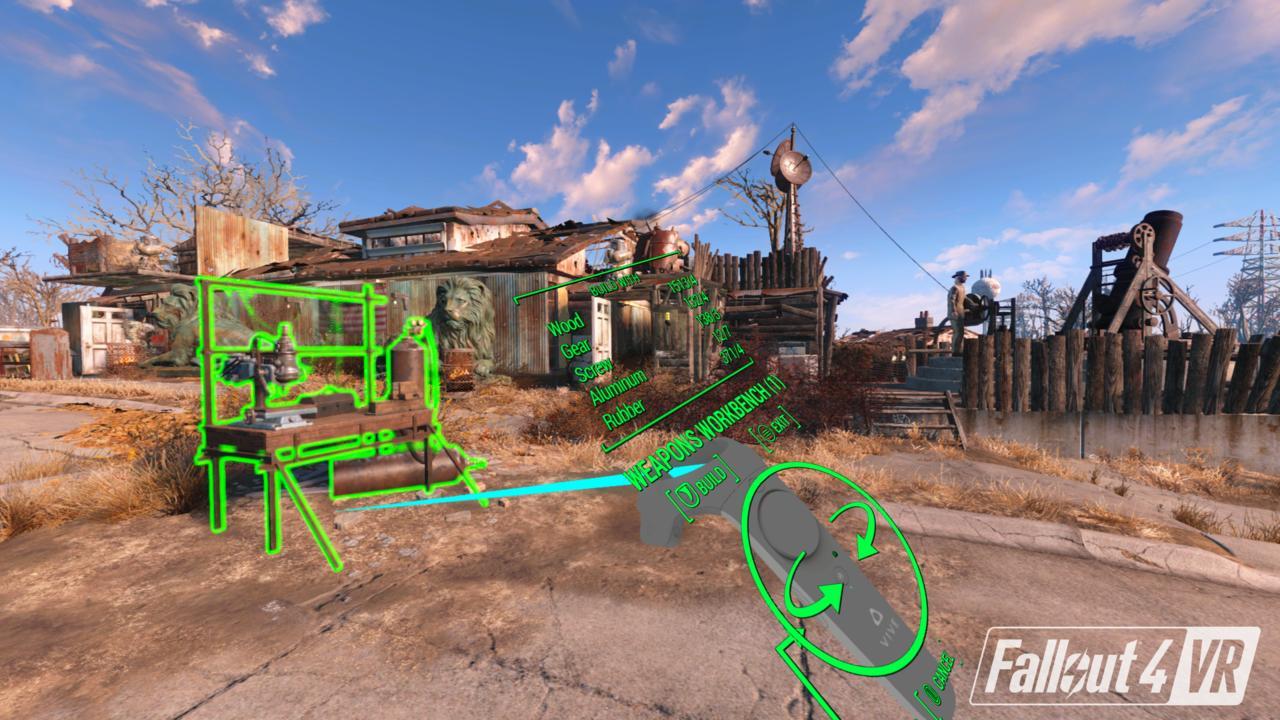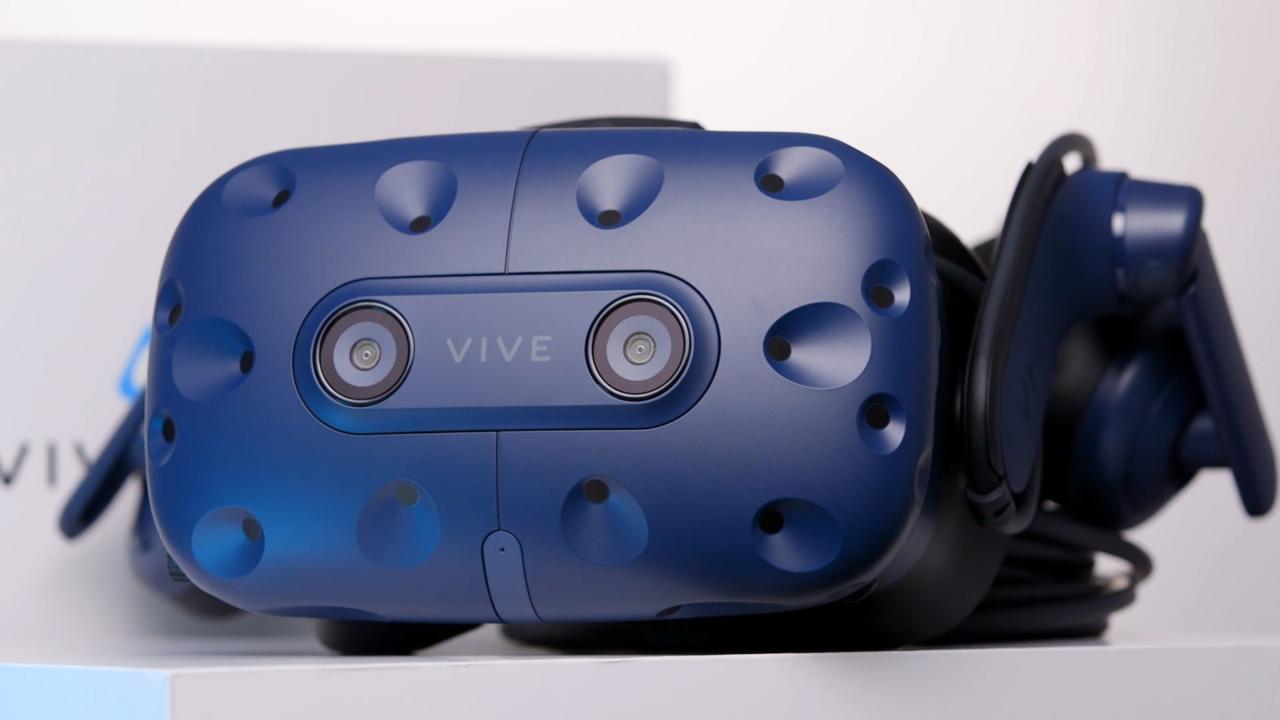HTC Vive, Oculus Rift, and PlayStation VR brought us virtual reality gaming back in 2016. While software has matured at a steady pace over the last two years, VR hardware has remained the same for the most part, until now. Strapping on the ergonomically refined HTC Vive Pro opens your eyes to a perceptible step forward in visual fidelity for VR gaming. Unfortunately, these enhancements come at a hefty price that make it a product reserved for the most demanding VR enthusiasts.
Look Good, Feel Good
What makes the Vive Pro so noteworthy is the higher resolution of its dual OLED displays. Going from a combined resolution of 2160x1200 (1080x1200 per eye) on the original HMD to 2880x1600 (1440x1600 per eye) of the Vive Pro significantly refines the visual quality of any VR game. The simple bump in resolution translates to a much sharper image; small details like foliage, vegetation, and tree leaves look like fitting pieces to the graphical puzzle rather than fuzzy textures that fill up spaces, which was immediately noticeable when playing The Elder Scrolls V: Skyrim VR. And when a game environment heavily relies on a number of these objects to create a more lively, lush world, the absence of jaggies is both immediately apparent and much appreciated. Even the barren wasteland of Fallout 4 VR benefits from the resolution bump as building interiors and abandoned towns felt a bit less artificial. By swapping between the original Vive HMD and the Vive Pro multiple times in different scenarios for each game we played, the improvement was evident.
The simple bump in resolution translates to a much sharper image; small details like foliage, vegetation, and tree leaves look like fitting pieces to the graphical puzzle rather than fuzzy textures that fill up spaces...
In-game text is also much more clear. Navigating menus and reading prompts is significantly easier as you spend less time trying to get the right focus on text in virtual reality. By nature of VR projecting images so close to your eyes, graphical blemishes come to the forefront, so for the Vive Pro to reduce aliasing to great effect alleviates some of those flaws. Again, these enhancements are due to the increased resolution; don't expect better textures, lighting, or character models.

The Necessary Power To Go Pro
Higher resolution isn't without its drawbacks, though. Like with any game, increasing resolution is going to demand more performance from your PC. With Vive, it's absolutely crucial to maintain the 90 frames per second that the 90Hz displays offer. Because of this, HTC raised the minimum and recommended PC specs to use the Vive Pro. When it comes to your GPU, you'll need at least a GTX 1060 or RX 480, but the recommendation for an optimal experience is either a GTX 1070 or RX Vega 56. CPU and memory requirements remain the same, so you're in the clear running at least an Intel Core i5-4590 or AMD FX 8350 and 4GB+ of RAM.
To get the most out of the Vive Pro, you should really have the recommended specs or higher.
While were spent most of our time on the Vive Pro using a system equipped with the top-end GTX 1080 Ti GPU and an Intel Core i7-6700K, we tested the new HMD with a 6GB GTX 1060 to make sure the minimum spec is enough for games like Fallout 4 VR--sadly, even with graphics settings turned down, we often had missed frames throughout our time playing it, monitored via Steam's displayed frame timings and missed frame notifications. We didn't have this issue with Skyrim VR on medium settings and native resolution. Raw Data ran just fine with a few missed frames on rare occasions, and didn't hinder the experience. But, to get the most out of the Vive Pro, you should really have the recommended specs or higher. Otherwise, that higher resolution would be all for naught if graphical compromises need to be made to run a smooth framerate.
As Comfortable As Vive Gets
A comfortable framerate is one thing, physical comfort is another--and the Vive Pro's stock head strap is on point. With a form-fitting facepad around the HMD and dense foam on the back of the strap, the Vive Pro provides enough comfort for long sessions. Also, its seamless design has the head strap moving as one piece. The top is made up of an adjustable velcro strap, while the back consists of an easy-to-use dial that loosens and tightens the whole thing, similar to the PSVR. Not only does this design make it extraordinarily simple to put on and take off, but it provides balanced weight distribution--no longer does HTC's headset have that nagging front-heavy feel.

In addition to impressive comfort, the head strap comes with built-in on-ear headphones. These don't exactly have the clarity of high-grade audio equipment, but they pack enough thumping bass, and there's minimal distortion for high and mid frequencies. Accurate positional audio is also a highlight, which is a necessity for the VR experience. One drawback is that the headphones won't sit perfectly flush on everyone's ears, which can compromise sound isolation.
Shelling Out The Dough
One of the most intimidating factors with VR is the cost of entry; price drops from all the leading platforms have certainly lowered the barrier, but unfortunately, the Vive Pro abandons the trend entirely. For $800 USD / £800 GBP / €880 EU / $1,200 AUD, you're only getting the upgraded HMD with the new breakout box. That's it. The Vive Pro does not come with the Vive controllers or the two required base station sensors. Those who have yet to hop on the Vive ecosystem will be shelling out a pretty penny for the necessary equipment. This essentially posits the Vive Pro solely as an upgrade for those who already own the original headset. Even then, that price tag is a lot to ask.
As great as the Vive Pro is, you won't miss out on any games or functions that you don't already get with the original Vive.
Verdict
With Vive Pro, HTC is raising the bar for VR gaming headsets; the benefits of its higher resolution are undeniable. Along with an improved head strap for better comfort and weight distribution, it seems the Vive Pro is a clear win for HTC. However, the high price may make it cost-prohibitive for VR newcomers, especially because of the incomplete package. This is very much for the VR enthusiast with a high-end PC who wants the latest and greatest hardware regardless of the price tag, which is further reinforced by the fact that minimum specs won't cut it for more graphically demanding games. If you don't fall into the category, there isn't enough to warrant a Vive Pro as it stands. As great as the Vive Pro is, you won't miss out on any games or functions that you don't already get with the original Vive.
| The Good | The Bad |
|---|---|
| + Higher resolution translates to a noticeable improvement in visual clarity | - Expensive, especially if you don't have the original Vive package |
| + Improved ergonomics; more comfortable to wear and better weight distribution | - Doesn't offer enough over the original Vive to warrant the price |
| + Built-in headphones produce decent audio quality | - Will need to upgrade your PC if you use the minimum specs of the original Vive |




















